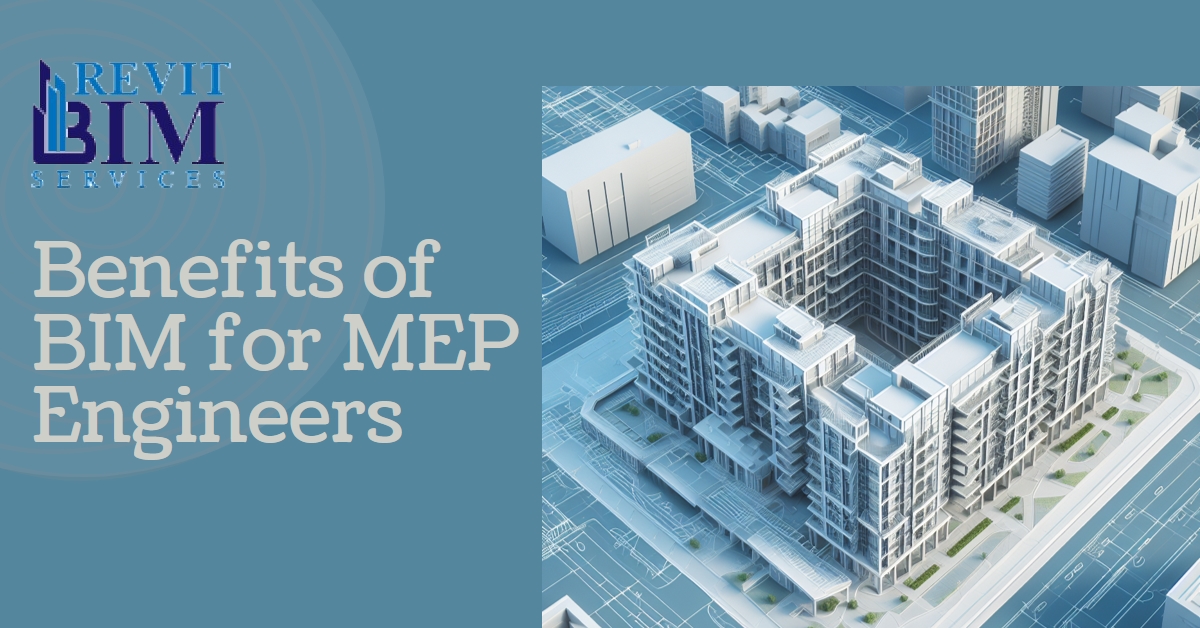
Benefits of BIM for MEP Engineers
Business Information Modeling has established itself as an indispensable tool in the construction industry. BIM serves as a digital representation of a building’s design and construction, facilitating the planning, design, construction, and management of building projects. In the domain of MEP engineering, BIM serves as a catalyst for achieving enhanced coordination, efficiency, and accuracy throughout the project lifecycle.
What is MEP engineering?
MEP engineering stands for Mechanical, Electrical, and Plumbing engineering. It is a discipline that deals with the design and installation of building systems that are essential for human comfort and safety. These systems include:
Table of Contents
- Mechanical systems: These systems are responsible for heating, ventilation, and air conditioning (HVAC), as well as fire protection and suppression systems.
- Electrical systems: These systems are responsible for providing power and lighting to a building, as well as fire alarm and security systems.
- Plumbing systems: These systems are responsible for providing potable water and waste disposal to a building.
MEP engineers work closely with architects and other stakeholders of the construction process to design and install these systems in a way that is efficient, safe, and code-compliant. They also play an important role in the operation and maintenance of MEP systems throughout the life of a building.
Let’s explore the transformative power of BIM Services that revolutionizes MEP Engineering:
-
Enhanced Collaboration
BIM fosters seamless collaboration among MEP engineers, architects, contractors, and other stakeholders throughout the project lifecycle. By providing a single, centralized 3D model, BIM eliminates the need for multiple representations and ensures that everyone is working with the most up-to-date information. Thus, this real-time coordination reduces the risk of conflicts, delays, and rework which leads to more efficient and successful project execution.
-
Improved Efficiency
By streamlining MEP workflows, BIM Modeling enables engineers to work faster and more effectively. The 3D model serves as a virtual laboratory that allows engineers to test design iterations, identify potential issues at the early stage of the construction process, and also optimize system layouts. This proactive approach streamlines the overall construction process.
-
Clash Detection and Resolution
BIM’s clash detection capabilities are a game-changer for the MEP engineering process. By identifying and resolving conflicts between MEP systems and other building elements within the virtual model, BIM Modeling eliminates costly and time-consuming clashes during the physical construction phase, therefore saving time, reducing rework, and ensuring the smooth installation of MEP systems.
-
Accurate Quantity Takeoffs and Cost Estimation
BIM Modeling provides accurate and detailed information about the quantities of materials required for MEP engineering systems. This information can be directly extracted from the 3D model which eliminates the need for manual calculations and minimizes the risk of errors. Accurate quantity takeoffs lead to more precise cost estimates, enabling better budgeting and financial planning for MEP projects.
-
Enhanced Design Quality
MEP engineers can more innovative and efficient designs with BIM Modeling. The 3D model provides a visual representation of the entire system which allows engineers to explore different design options, optimize system layouts, and identify potential issues before they become costly problems for the project. This iterative design process leads to higher-quality MEP systems that meet project requirements and enhance building performance.
-
Improved Safety
One of the main benefits of BIM is it contributes to a safer construction environment by identifying potential safety hazards early on in the design phase. By visualizing the interactions between MEP systems and other building elements, engineers can proactively identify and eliminate potential safety risks, such as ductwork conflicts with structural members or electrical hazards. This proactive approach reduces the risk of accidents and injuries during construction.
-
Streamlined Maintenance and Operations
BIM provides valuable information for the ongoing maintenance and operation of MEP systems. The 3D model serves as a comprehensive repository of information about the systems which includes their components, locations, and specifications. In the later stage, this information can be used to create maintenance schedules, troubleshoot problems, and plan upgrades or renovations of buildings and structures.
-
Enhanced Sustainability
BIM Modeling Services can be leveraged to promote sustainable building design and construction practices. By analyzing the energy performance of MEP systems within the 3D model, engineers can identify energy-efficient design options and optimize system configurations to reduce energy consumption and minimize environmental impact.
-
Improved Project Management
BIM provides a centralized platform for managing all aspects of a building project, from design to construction. This makes it easier for MEP engineers to track progress, manage resources, and coordinate with other stakeholders. BIM also helps MEP engineers stay on top of deadlines, budgets, and project requirements, improving the overall efficiency of their work.
Conclusion
In conclusion, BIM is a valuable tool for MEP engineers to stay ahead of the curve in the construction industry. BIM Modeling’s many benefits which include improved collaboration, enhanced visualization, better cost estimation, improved safety, and more, make it a must-have for modern MEP engineers. BIM helps MEP engineers improve the quality of their work, reduce costs, and increase their efficiency by allowing them to better serve their clients and stay upgraded in today’s rapidly changing construction landscape.
We at Tesla Outsourcing Services will provide you with expert MEP BIM Modeling Services. With a team of experienced professionals, specialized in the on-time delivery of projects, we can help you meet your deadlines, budget constraints, and quality standards.